
15 minute read
Value of Christian Higher Education
the value of
Christian Higher Education
The research varies, but most approximate that 50-70% of Christian teenagers disengage with their faith as they progress through college. Much of this slow fade away from the Church is due to college freshmen leaving home unprepared for campus life at public or secular colleges, and the lack of worship and fellowship opportunities at these institutions.
In fact, according to the research of political scientists Robert P. Putnam and David E. Campbell, “Young Americans are dropping out of religion at an alarming rate of five to six times the historical rate (30-40% have no religion today, as opposed to 5-10% a generation ago).” This isn’t a surprise as only one-third of college faculty nationwide describe themselves as regular churchgoers, and Christian viewpoints are openly mocked in many college classrooms.
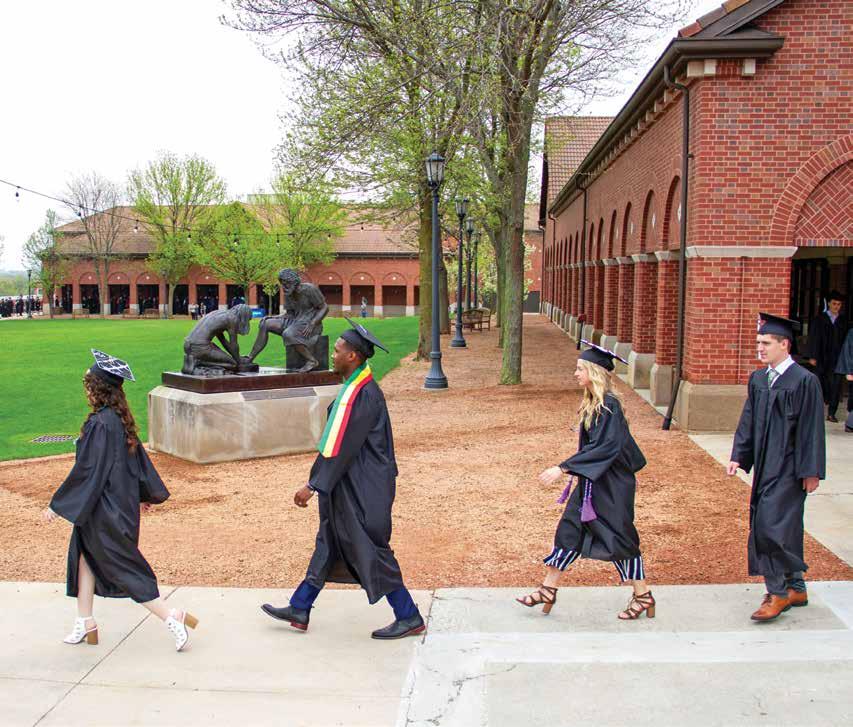
At Wisconsin Lutheran College, we’re humbled to be an aberration among these colleges and within these statistics. We help our students learn the skills they’ll need to build their career, and live their values while doing it. We believe that nurturing the whole person – mind, body, and spirit – is what education is truly about. Helping students connect with themselves, their faith, and the world at large drives our work.
There are many valuable characteristics of WLC, to be sure. Yet, we don’t hesitate to state that our greatest value-add is this: We were founded by Christian men and women who desired to launch a college characterized by faithfulness to the Scriptures and the Lutheran Confessions, and we remain rooted in Jesus’ truths – providing an academic and Christian faith experience that prepares our students to see their potential and purpose in their everyday life and work.
WLC’s commitment to Christian higher education provides unique value to our students:
PURPOSE
Students can get an education virtually anywhere. But an education that also helps them discover their purpose? That isn’t as common. A Christian college like ours does more than prepare young people for a career. We encourage deep introspection that helps them see themselves and their place in the world in new, powerful ways. Our hope for students is they have a meaningful college experience that enables their growth academically and spiritually so they can confidently live their purpose.
COMMUNITY
A strong community depends on the people within it trusting, respecting, and caring for each other in moments of agreement – and especially in moments of challenge. At WLC we strive to cultivate just such an environment. We welcome those with curious minds who are willing to ask big questions about their faith, life, and work. Our faculty and staff are accessible and involved, caring deeply for our students and serving as Christian mentors. It’s one more way we help our students become confident, compassionate leaders, and lifelong learners.
JESUS
It’s normal for young people – even those with loving, supportive families and friends – to feel alone, or unsure about their path in life. Those feelings have only intensified in recent years as we all grapple with a rapidly changing world and daily uncertainties. One constant amidst the unknown is Jesus. Students at WLC are grounded in Christ’s wisdom and encouraged to follow His example as a servant leader. With His example, the world begins to look different, their path appears clearer, and changing the world for the better feels more possible.
Everything we do is a steadfast reflection of our mission. And it’s why our students graduate from WLC with a sense of confidence, ready to live out their lives with purpose and make a meaningful difference – as bold Christian servant leaders.
Interested in experiencing this for yourself? Private, in-person campus tours can be arranged Monday-Friday during most weeks. Upon visit confirmation, we’ll provide further details about the steps we are taking to provide a healthy visit experience for you and your family. Or schedule an online visit to engage in a personalized virtual tour of our campus with an admissions counselor and get answers to your questions.
Visit wlc.edu/visit to learn more.
IN THE FOOTSTEPS OF ST. PAUL
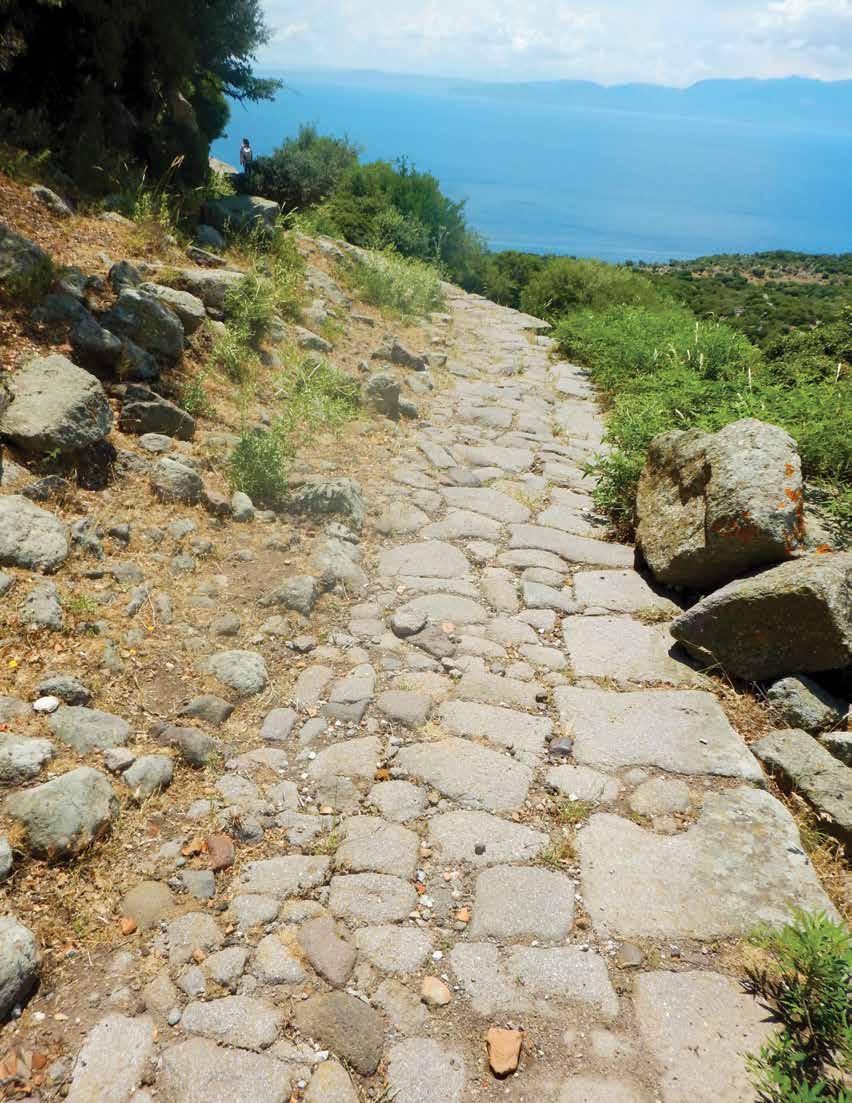
Research Trips Lead To Changes in Biblical Maps
By Lisa Leffel ’98 anatolianroads.org
- Jacob Werre ‘15

2017
In 2008, Rev. Dr. Glen Thompson, then serving as professor of history at Wisconsin Lutheran College, had an idea: “I wanted to provide WLC humanities students with the opportunity to experience overseas travel and learn about archeology.” At the same time, Thompson wanted to get back to his early study of the missionary journeys of St. Paul.
Together with New Testament scholar Dr. Mark Wilson, who Thompson had met at a professional conference, a project was developed at WLC to more accurately determine and map the specific roads St. Paul had traveled. “The opportunity for WLC students to travel to the biblical world and experience its material culture firsthand is a significant learning experience for them,” noted Wilson.
Shannon (Turner) Li ’12, a member of the first research trip, went on to earn her doctorate in medieval history from The Ohio State University. She pointed to this trip as one of a number of transformative college experiences: “WLC provided me with a solid foundation for earning my degree at OSU. The professors were all very supportive, and they encouraged critical thinking and independent research, which are essential skills for pursuing secondary education.”
While St. Paul’s journeys have been studied for almost 2000 years, the maps used to depict them are still not without problems. Bible atlases often just draw straight lines from one city center to the next. These do not account for the topography of the land or take into account what roads actually existed in the first century. Thompson and Wilson’s plan was quite simple. They would go on site, use GPS to record the precise location of still-existing ancient road segments and bridges from the Roman period, map these, and then connect the dots. In this way a much more accurate and realistic map of the ancient road system could be produced. That map could then be used to plot St. Paul’s travel options more accurately. Dr. Gerald (Jerry) Fischer, a member of WLC Board of Regents, and his wife, Kay, were intrigued by the project and committed to financially supporting it – and taking part in it!

2010
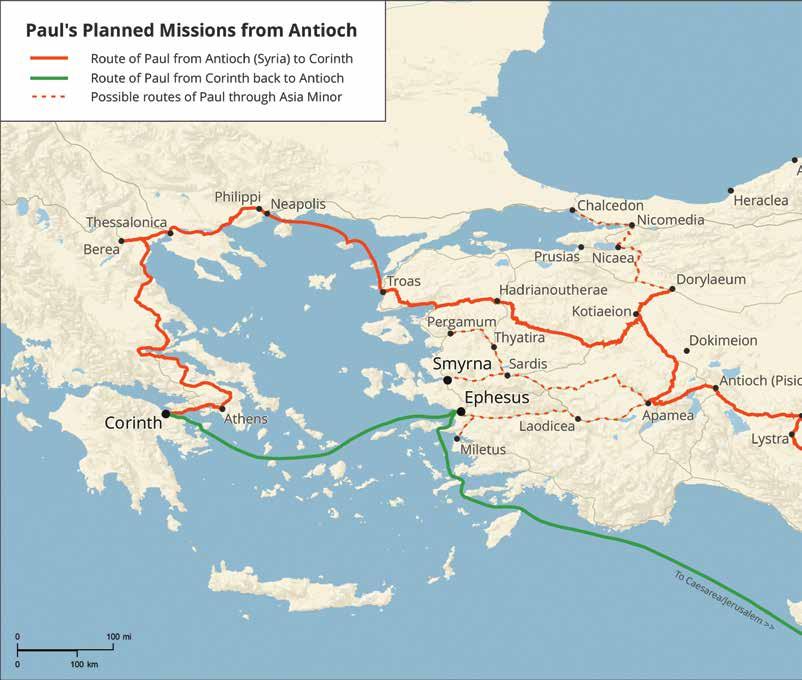
The map as it appeared in the Lexham Geographic Commentary, based on the work of Eckhard Schnabel. The orange line shows Paul’s second journey and incorporates the work of the WLC research team.
Students who were selected to participate were provided with background reading to familiarize themselves with the trip’s destinations. Each was also assigned a specific location to research in preparation for sharing with the team when visiting that site. Tutku Tours of Izmir, Turkey, provided a local guide and driver for each of the four two-week trips that have taken place. At the conclusion of the tour, students could opt to submit a research paper to obtain additional credit for the study experience.
Thompson and Wilson plan each trip, based on the biblical accounts and on previous discoveries of roads, bridges, milestones, funerary monuments, cisterns, and other indications for the existence of an ancient road. These have survived mostly in rural areas. Starting with already known surviving traces, the team then seeks to find new traces in the area. Local farmers are interviewed; local archaeologists are consulted. As traces are found, they are measured, photographed, sketched, and GPS coordinates are recorded by the students. Road width helps the group to determine if a road was a primary or secondary artery. Findings from all the trips are shared on the project website, anatolianroads.org. “I think one unique aspect of these trips is that they are off the

beaten path. One of the best moments was when I was standing on the remains of a Roman bridge in the middle of a field and realized that Paul likely walked on these very stones,” said Jacob Werre ’15, who went on the second trip.
Li added: “The Roman Roads Tour was an amazing experience. It was my first time traveling abroad, and it felt surreal to walk the roads and touch the artifacts used by ancient Romans and early Christians. Seeing historical sites in person and studying material culture enhances your understanding of the written sources, and this trip inspired future study trips I made to Ireland and Germany.” The first trip was in June 2010 and followed Paul’s first journey in what is modern day Turkey. Li and fellow WLC students Jon Jossart ’11 and Paul Young accompanied the Thompsons, Wilsons, and Fischers. The goal for the first trip was to investigate the route of Paul in Galatia, especially his route from Perga to Antioch (Acts 13:13-14), the route between Antioch and Iconium (Acts 13:51), and the road system around Lystra and Derbe (Acts 14:6-7). The most exciting discoveries were of a road section northwest of the city of Perge, and, alongside it, an unpublished Greek and Latin inscription from the first-century.
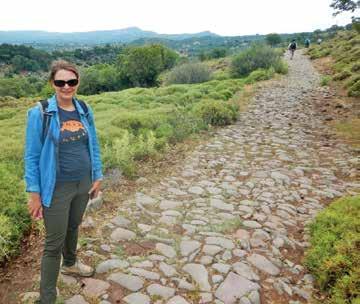
The second research trip was in June 2013. This time, Werre joined the Thompsons, Wilsons, Fischers, and one student each from the Asian Lutheran Seminary, Wisconsin Lutheran Seminary, and Martin Luther College. The team explored the disputed route of Paul’s second missionary journey from Galatia to Troas (Acts 16:6-8), especially the missing roads between Phrygia and the Aegean coast and Paul’s route in the Troad. This trip resulted in a groundbreaking article published in the Tyndale Bulletin in 2017.
In May 2017, a third trip had two separate goals. First, the group re-created Paul’s 30-mile walk from Troas to Assos (Acts 20:13). Secondly, they revisited an area from the second trip that required further examination. Accompanying the Thompsons, Fischers, and Wilsons from WLC were assistant professor of history Sheena Finnigan ’06 and her husband, Ross ’06, along with Marta Stahlfeld ’16, Jenna Ehlinger ’20, and Sam Doebler ’20 from WLC. The team successfully gathered new evidence for Paul’s route to Assos and found further evidence of the ancient road system.
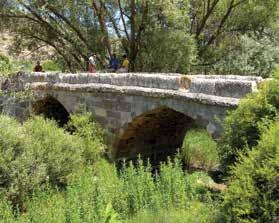



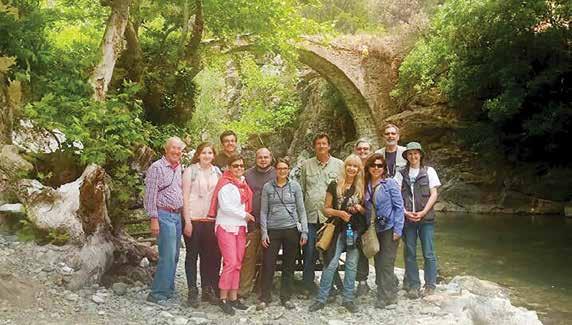
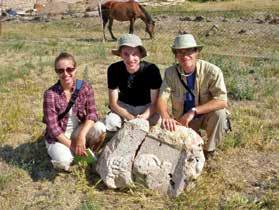
2017
2017
2013
2017 A fourth trip in the summer of 2018 concentrated on Paul’s travels in Italy. It investigated the route taken when Paul was sent for trial to Rome – his arrival at Puteoli in Italy (Acts 28:14) and his route along the famous Appian Way to Rome (Acts 28:14-16).
Thanks to the Fischers’ support, Thompson and Wilson have not only made the research findings available online, but they have shared the results in numerous journals and scholarly conferences. In this way the research has begun changing the maps of Paul’s journeys. For example, Prof. Eckhard Schnabel in the recently published Lexham Geographic Commentary on Acts Through Revelation illustrated the path of Paul’s second journey along the new roads documented by the WLC team (see illustration on page 12). It is likely that the maps in the back of our Bibles will eventually follow suit. “I knew that what we were doing was impactful scholarly research, but I wasn’t sure what impact it would have. I’m looking forward to seeing the changes in the historical maps,” Werre said.
As soon as the pandemic subsides and it is safe to travel again, a fifth trip will explore the areas in Greece where Paul travelled in his second and third journeys – between Neapolis, Philippi, and Thessalonica (Acts 16:11, 17:1). “Paul’s route to and from Beroea are of special interest,” said Thompson, “as they have never been properly explored” (Acts 17:10,14).
Thompson served at WLC from 2002 to 2011, when he moved to Hong Kong to join the faculty of Asia Lutheran Seminary. At that time, the Roman Roads project expanded to become a joint venture for WLC and Asia Lutheran Seminary. Thompson retired this past summer and has returned to Milwaukee. He looks forward to continuing the project with his former student and successor at WLC, Prof. Finnigan, and in working with WLC students on the website and on future trips. He is also working with Wilson on a book about Paul’s journey to Rome as a prisoner.
Werre encourages the next generation of WLC students to participate: “I was blessed to go on multiple research trips, and they expand your horizons. Traveling opens you up to new people, ideas, cultures, and more that will benefit you for years to come.”


CLARENCE JENKINS

LAURA GOBA
ALLY GOBA
3
GENERATIONS
By Adam Heinzen ’06
of Warriors Volleyball
When Clarence Jenkins was named head coach of the Warriors women’s volleyball program in 1988, little did he know that he was beginning an on-court family legacy that still exists more than three decades later.
A 2019 inductee into the Wisconsin Lutheran College Athletics Hall of Fame, Jenkins remains the winningest coach in program history having led the Warriors to 95 victories, including a near perfect 40-2 conference mark during his five seasons (1988-1992) at the helm.
“God immediately blessed me with some very talented players,” admitted Jenkins. “Good athletes always want to be part of a winning program. I would tell players I was recruiting that we simply didn’t lose.” That mantra certainly proved to be true during a string of four straight Lake Michigan Conference championships, including the college’s first-ever league title in 1989 and first district championship in 1992. With that success, the team’s reputation grew. In fact, it was Jenkins’ volleyball program that secured the first-ever national ranking for Wisconsin Lutheran College athletics.
Four years into his coaching tenure, Jenkins’ daughter Laura joined the Warriors as a freshman. “I always knew that I was going to WLC,” said Laura (Jenkins) Goba ’95. “The first year I played we didn’t even have a gym. Our warm-up consisted of jogging down to Wisconsin Lutheran High School.”
Despite any facility challenges, Goba experienced unprecedented team success in her three seasons with the Warriors, winning a trio of conference championships as well as a district title. In 1991, she and her teammates put together a 26-win season, still the most victories in a season to date.
“I expected a lot from Laura, especially as a freshman, so that the other players wouldn’t think I was playing favorites,” Jenkins reflected. “I’d like to think that I


Laura (Jenkins) Goba | #24 | 1991
eased up a bit on her after that. She was a very good server and back row player. She, like most first-year players, had played all the way around in high school. Most incoming players had to learn more specific roles. Laura accepted that and was a real contributor to the team’s success.”
So how difficult was it to be a collegiate coach and a father of one of the players at the same time? Well, for Jenkins it wasn’t as challenging as it may seem from the outside: “I never really felt I was a ‘dad’ coaching. I always felt I was coaching a team, so it wasn’t hard coaching a daughter from that standpoint. I yelled a lot, but I distributed my tirades equally.”
As for being on the daughter/athlete end of the relationship, Goba admits it wasn’t always smooth. “Has anyone ever thought it was easy to be the coach’s kid? He was hard on me, and I’m sure that I was hard on him.” But the former Warrior admitted: “Challenges make us stronger and build character. He was a very good coach and well-liked by my teammates…most of the time!”
Now, fast-forward to 2019 when the former coach and former athlete found themselves seated in the Recreation Complex watching a third generation of the family compete. This time, it’s Ally Goba on the court wearing a Warriors uniform. The daughter of Laura and granddaughter of Clarence said becoming a Warrior was always a possibility: “My family history definitely had an impact on me choosing WLC. I was always encouraged by my mom and grandpa to play volleyball here, and I loved how close WLC was to home [Mukwonago, Wisconsin] so that they would be able to watch me play in person.”
When Ally took to the court in her rookie season, she most certainly didn’t let them down. She became just the fourth freshman since 2000 to earn First Team All-Northern Athletics Collegiate Conference honors. Ally led the Warriors in digs and service aces, both of which put her in the top 10 of league rankings in just her first year on the floor.
The legacy that her mother and grandfather began now rests on Ally’s shoulders, but that doesn’t intimidate her one bit. She relishes the opportunity: “It means a lot that I get to continue in the footsteps that my mom and grandpa made when the program was so fresh and small. I am excited to leave my own footprints for future teams and possibly family members, too.”
And while Ally, now a sophomore, competes, her mother appreciates the work that goes into being a collegiate athlete. “I love going back onto the WLC campus and watching my daughter play. They have a really great program, and she also loves her teammates and has great coaches.”
As for the Hall of Fame coach and patriarch of this volleyball family, Clarence Jenkins is more than happy to sit back and let his granddaughter set her own course. “It’s nice, but I wouldn’t want to put too much pressure on her to continue playing or to become a coach to live up to anyone else’s expectations.”
Ally Goba | #2 | 2019







